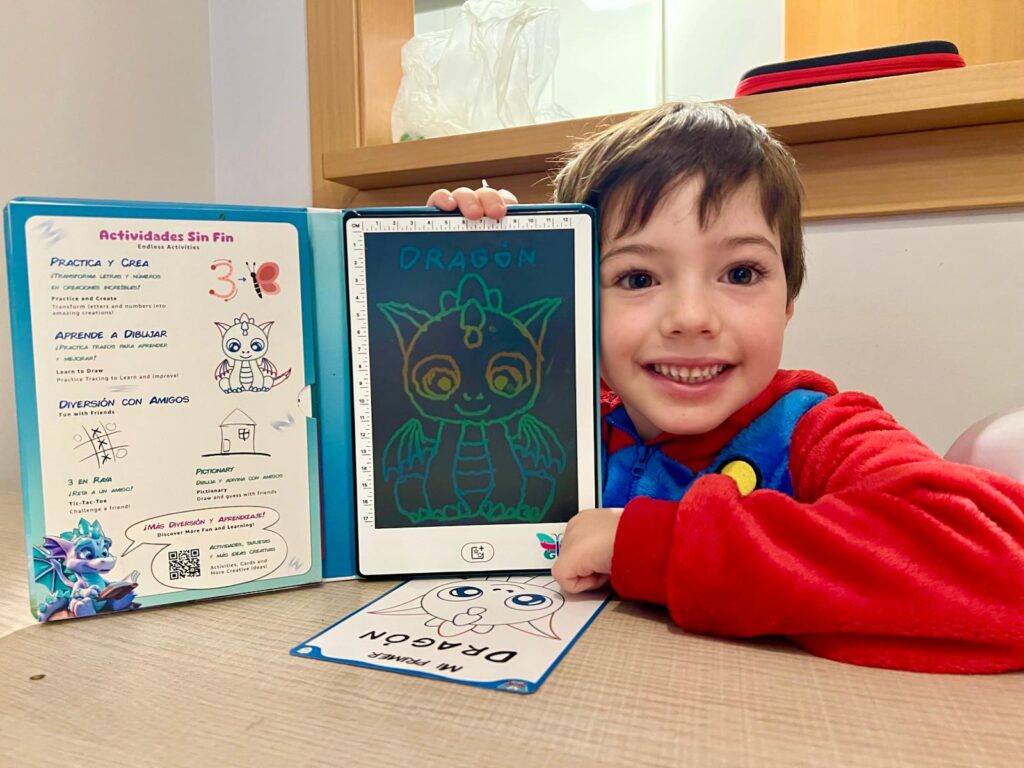Introduction: Why Creativity and Real-World Skills Matter
As parents, we’re always thinking about the future. We don’t just want our kids to learn the basics—we want them to grow into confident, creative problem-solvers who can tackle real-world challenges with curiosity and resilience.
That’s one of the reasons I’ve been so impressed by the Montessori method. It’s not about memorizing facts or completing worksheets—it’s about teaching kids how to think, explore, and create in ways that prepare them for life. When I started using the WonderPad with my child, I realized it wasn’t just helping them learn letters and numbers—it was also sparking their imagination and building skills they’ll use every day.
In this article, I’ll share how the WonderPad fosters creativity, encourages problem-solving, and builds practical life skills, all while keeping learning fun and engaging.
Promoting Creativity and Imagination
One of the first things I noticed about the WonderPad is how it encourages my child to think creatively. The activity cards aren’t just about tracing or counting—they weave in stories, characters, and prompts that make learning feel like an adventure. For example, one of my child’s favorite activities is tracing glowing mushrooms in the magical world of Wonderia and answering fun questions like, “How many mushrooms do you see?”
This kind of imaginative play is exactly what Montessori education values. Dr. Maria Montessori believed that creativity is built on the foundation of real-world experiences and that children’s imaginations thrive when they explore meaningful, hands-on activities.
With the WonderPad, my child isn’t just passively absorbing information—they’re creating. They’re drawing dragons, tracing shapes, and solving puzzles that tie into bigger, more exciting stories. And as a parent, there’s nothing better than seeing their face light up when they proudly show me their work.
Why This Matters: Creativity isn’t just about making art—it’s a critical skill for problem-solving and thinking outside the box. The WonderPad’s open-ended prompts and interactive features give kids the freedom to explore their own ideas, just like a Montessori classroom would.
Encouraging Problem-Solving Through Fun Challenges
One of the biggest benefits I’ve seen with the WonderPad is how it helps my child develop problem-solving skills. Whether they’re navigating a maze, solving a connect-the-dots puzzle, or figuring out how many mushrooms are in a picture, they’re constantly thinking critically and working through challenges.
Montessori education emphasizes “control of error,” which means giving kids activities where they can figure out mistakes and learn from them without needing constant correction from adults. The WonderPad does this beautifully. For example, when my child was tracing a tricky shape, they kept trying until they got it right. The process wasn’t about being perfect—it was about learning through persistence.
What surprised me most was how these problem-solving skills translated to other areas. Suddenly, my child was more patient with tasks like tying their shoes or building with blocks. They learned to approach challenges with curiosity instead of frustration—a skill I know they’ll carry with them for life.
Why This Matters: Problem-solving isn’t just an academic skill—it’s a life skill. The WonderPad makes learning feel like a game, encouraging kids to tackle challenges with confidence and creativity.
Building Real-World Skills Through Practical Learning
Montessori education is famous for teaching kids real-world skills, from pouring water to learning how to write. The idea is simple: when kids practice tasks that connect to their everyday lives, they develop independence, responsibility, and confidence.
The WonderPad and its activity cards are great tools for bridging this gap between learning and real life. Tracing letters and numbers helps my child build the fine motor skills they’ll need for writing. Activities like counting objects or matching shapes teach math and logic in ways that feel natural and engaging.
One of the cards we used recently asked my child to trace the number “8” while counting lightning bolts. At first, I thought it was just a fun activity, but then I realized how much they were actually learning. They weren’t just practicing numbers—they were also improving their hand-eye coordination and connecting abstract concepts to real visuals.
Why This Matters: Practical life skills like writing, counting, and problem-solving are essential for kids’ growth. The WonderPad makes these lessons fun and approachable, giving kids the confidence to try—and succeed—on their own.
Conclusion: Learning That Lasts a Lifetime
As parents, we all want to give our kids the best tools for success. But it’s not just about teaching them facts—it’s about helping them grow into curious, capable, and creative thinkers who are ready for the world.
The WonderPad is more than just a learning tool. It’s a way to spark creativity, build real-world skills, and give kids the confidence to solve problems on their own. Whether they’re tracing dragons or navigating mazes, my child is learning skills that will serve them for life—and having a blast while doing it.
If you’re looking for a way to make learning fun, meaningful, and Montessori-inspired, I can’t recommend the WonderPad enough. Give it a try—you might just be amazed at what your child discovers!


